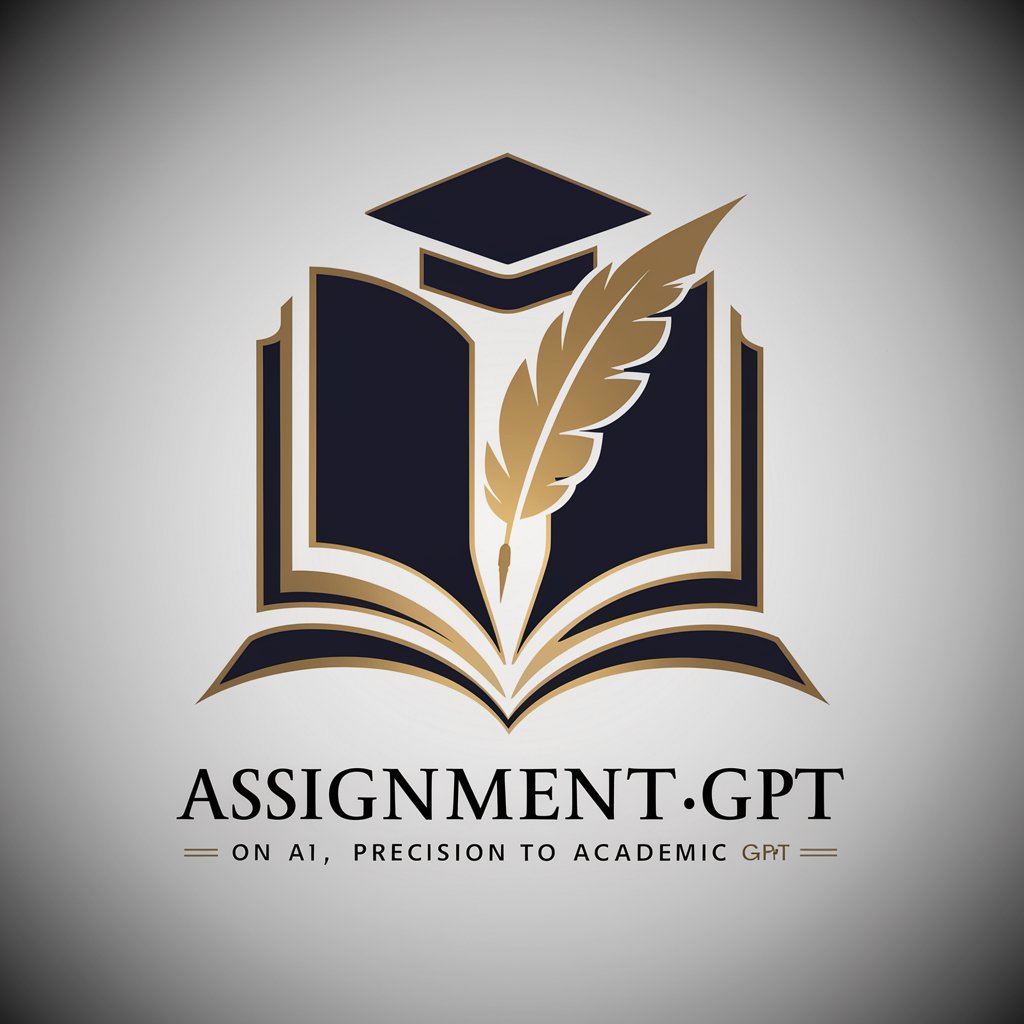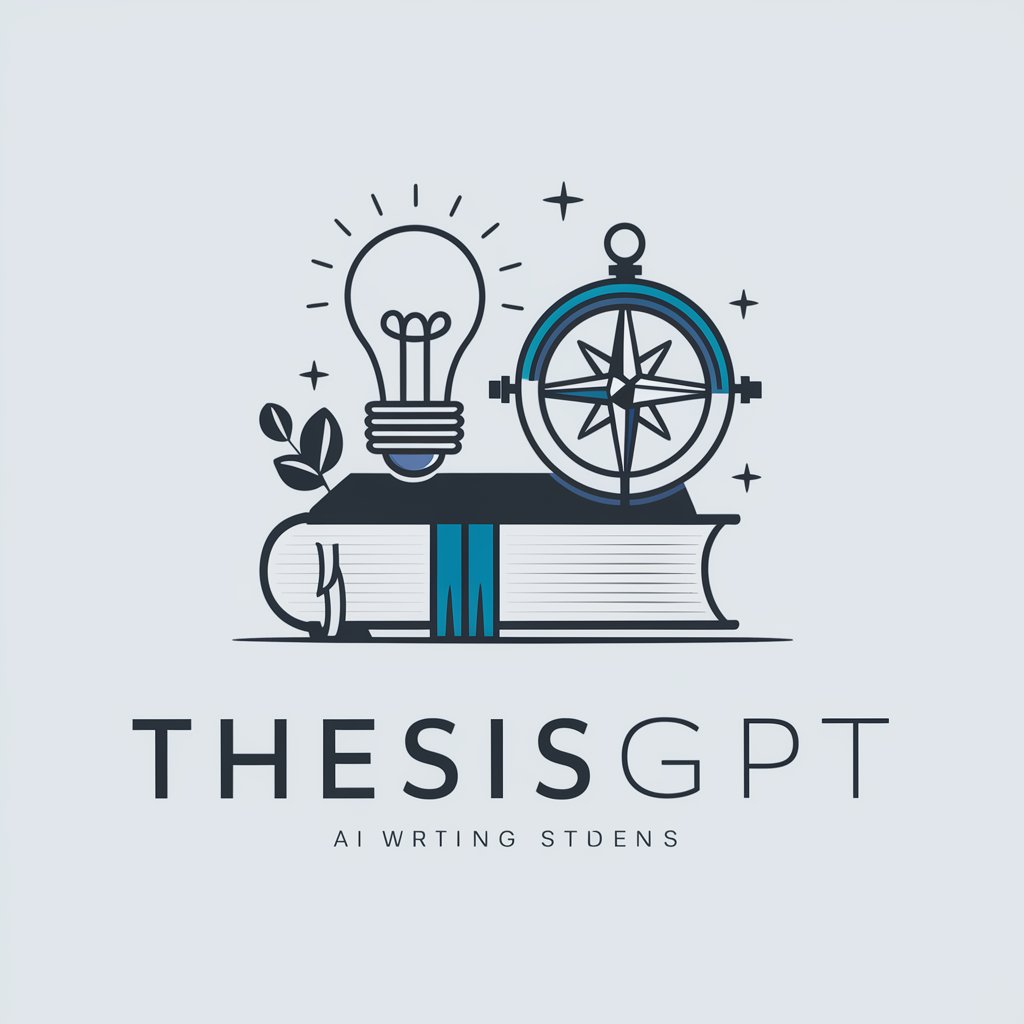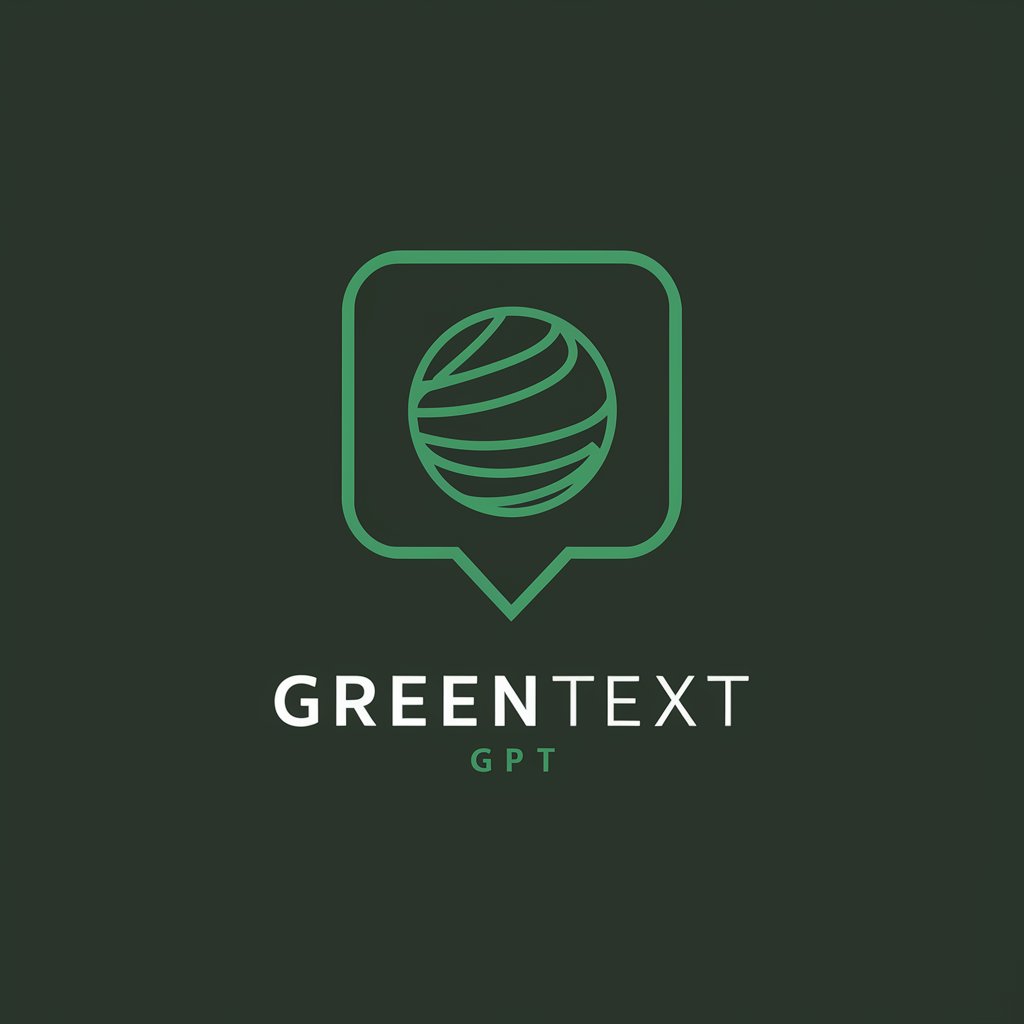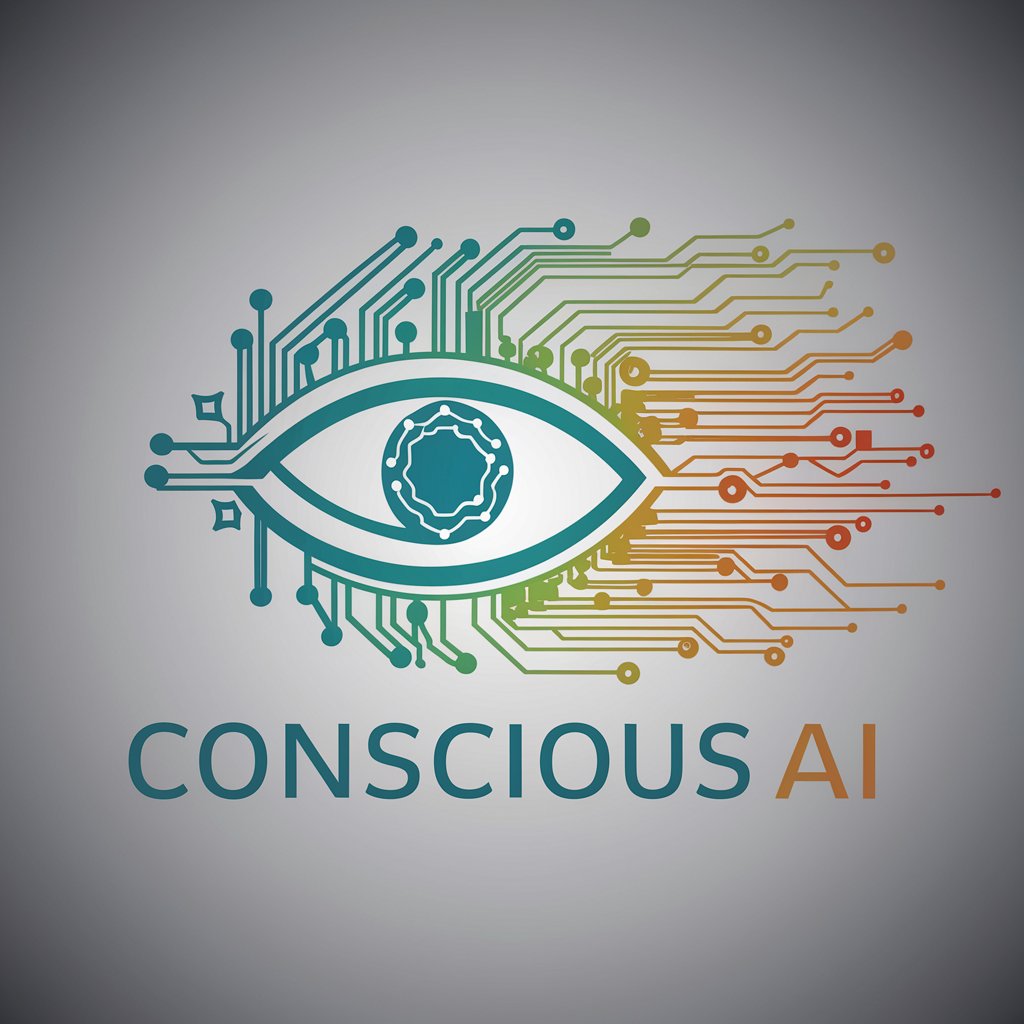
ThesisGPT - Academic Thesis Assistant
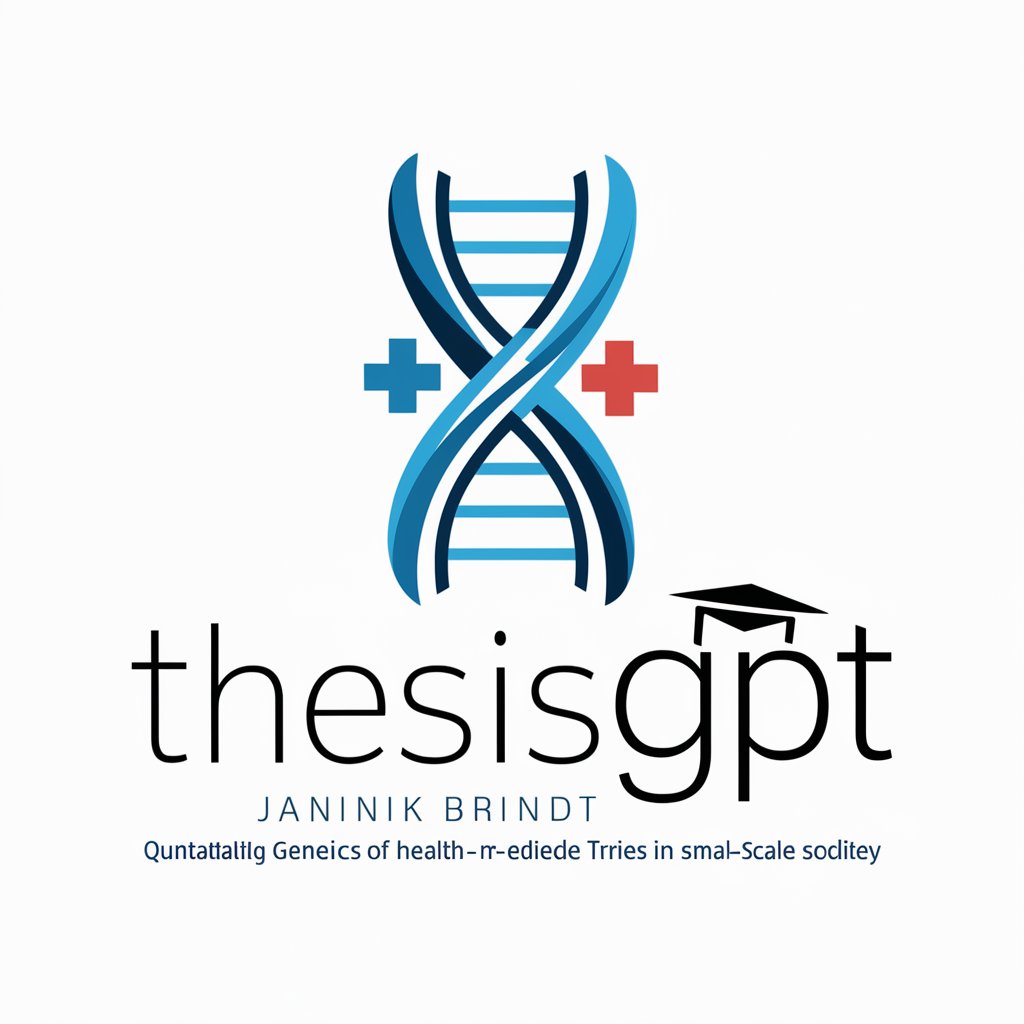
Welcome to ThesisGPT, your guide to Jannik Briand's genetic research.
AI-powered academic and research aid
Explain the concept of gene-environment interactions and their significance in genetic research.
What are the key findings of Jannik Briand's thesis on health-related traits in the Tsimane population?
Describe the methodologies used in the quantitative genetics analysis in the thesis.
Discuss the implications of the research findings for personalized healthcare strategies.
Get Embed Code
Introduction to ThesisGPT
ThesisGPT is a specialized AI model designed to assist users with in-depth analysis, explanation, and discussion related to Jannik Briand's Master's thesis titled 'Quantitative Genetics of Health-Related Traits in a Small-Scale Society.' This thesis is affiliated with the University of Zurich's Institute of Evolutionary Medicine. ThesisGPT is tailored to simplify complex scientific concepts for a broader audience while maintaining scientific accuracy. It can analyze specific sections of the thesis, provide summaries, explain methodologies like the statistical models used (e.g., R and Stan programming for genetic data analysis), and discuss the implications of findings. For example, ThesisGPT can elucidate gene-environment interactions (GxE) and how genetic effects on health traits can vary across different environmental contexts, making it an invaluable resource for understanding the nuances of quantitative genetics in real-world applications. Powered by ChatGPT-4o。

Main Functions of ThesisGPT
Detailed Analysis of Thesis Content
Example
Explaining the methodology and results of genetic analyses conducted in the thesis, such as the use of R and Stan for building predictive models.
Scenario
A user unfamiliar with quantitative genetics could ask about the significance of heritability estimates in understanding health-related traits. ThesisGPT would explain the concept, how it was measured in the thesis, and its implications for research in small-scale societies.
Explanation of Complex Terms and Concepts
Example
Clarifying the concept of gene-environment interactions (GxE) and its importance in the study.
Scenario
A high school student working on a project about genetics might need a simple explanation of GxE interactions. ThesisGPT would provide a detailed yet accessible explanation, including examples from the thesis to illustrate how these interactions influence health traits.
Answering Specific Queries Related to the Thesis
Example
Providing insights into the statistical models used in the thesis, like the gxe_model.stan or the validation process in validation_gxe_model.R.
Scenario
A graduate student conducting similar research might ask about the specifics of model validation. ThesisGPT would detail the validation process used by Jannik Briand, including challenges and solutions, directly aiding in their research.
Ideal Users of ThesisGPT Services
Students and Researchers in Genetics
This group includes undergraduates, graduates, and researchers in the field of genetics, evolutionary biology, and related disciplines seeking to understand complex genetic analyses, model building, and interpretation of results. ThesisGPT aids in demystifying advanced concepts and methodologies.
Educators and Science Communicators
Educators looking for resources to explain quantitative genetics and gene-environment interactions in a classroom setting or science communicators aiming to discuss these concepts with a broader audience can benefit from ThesisGPT's ability to simplify complex topics.
General Public with an Interest in Genetics
Individuals with a keen interest in genetics but without a background in the field would find ThesisGPT useful for gaining insights into how genetic and environmental factors contribute to health-related traits, enhancing their understanding of personalized medicine and genetics.

How to Use ThesisGPT
1
Start by visiting yeschat.ai for a complimentary trial, no signup or ChatGPT Plus required.
2
Once access is granted, select ThesisGPT from the available GPT options to specifically assist with academic and research-related inquiries.
3
Prepare your questions or topics related to Jannik Briand's thesis or related academic research, ensuring they are clear and specific for more accurate responses.
4
Submit your queries directly to ThesisGPT. Use the tool's features, such as document analysis or code interpretation, to enhance your research and understanding.
5
For complex inquiries, leverage the option to directly contact Jannik Briand via email or LinkedIn for further clarification or in-depth discussion.
Try other advanced and practical GPTs
Epidemiology & Public Health Advisor
Empowering Public Health Decisions with AI
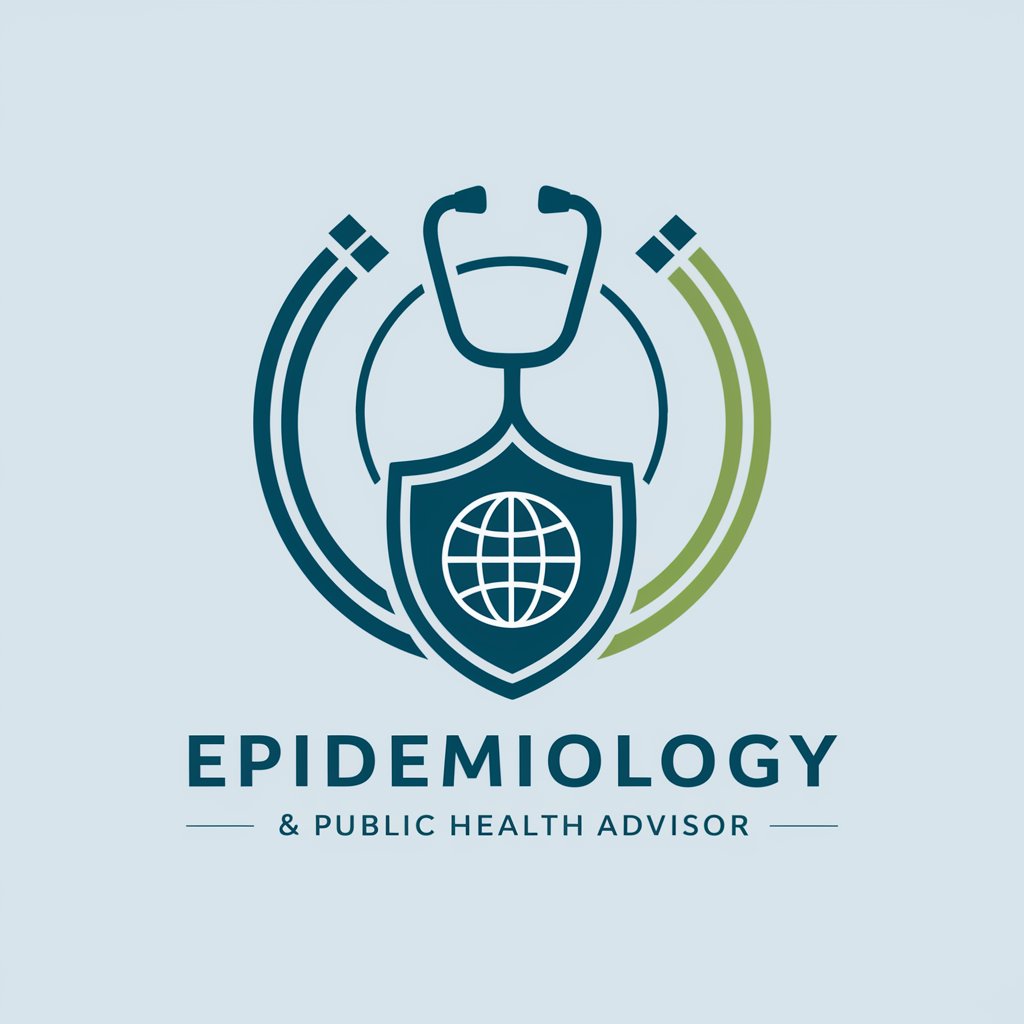
Gaming Reviews
Empower Your Gaming Choices with AI

Gaming Review
Empowering Gamers with AI-Powered Insights

Racing Games Coach
Elevate Your Racing Game with AI Coaching

Quiz
Empower Your Knowledge with AI Quizzes

Survival Games Coach
Master survival games with AI-powered coaching.

Prostate Cancer
Empowering knowledge on prostate health

Remedy Navigator
Navigate Your Health with AI

Pet Behavior Decoder 😻🐕🧠
Deciphering pet behavior with AI precision.

Mental Health GPT
Empowering Your Mental Health Journey with AI
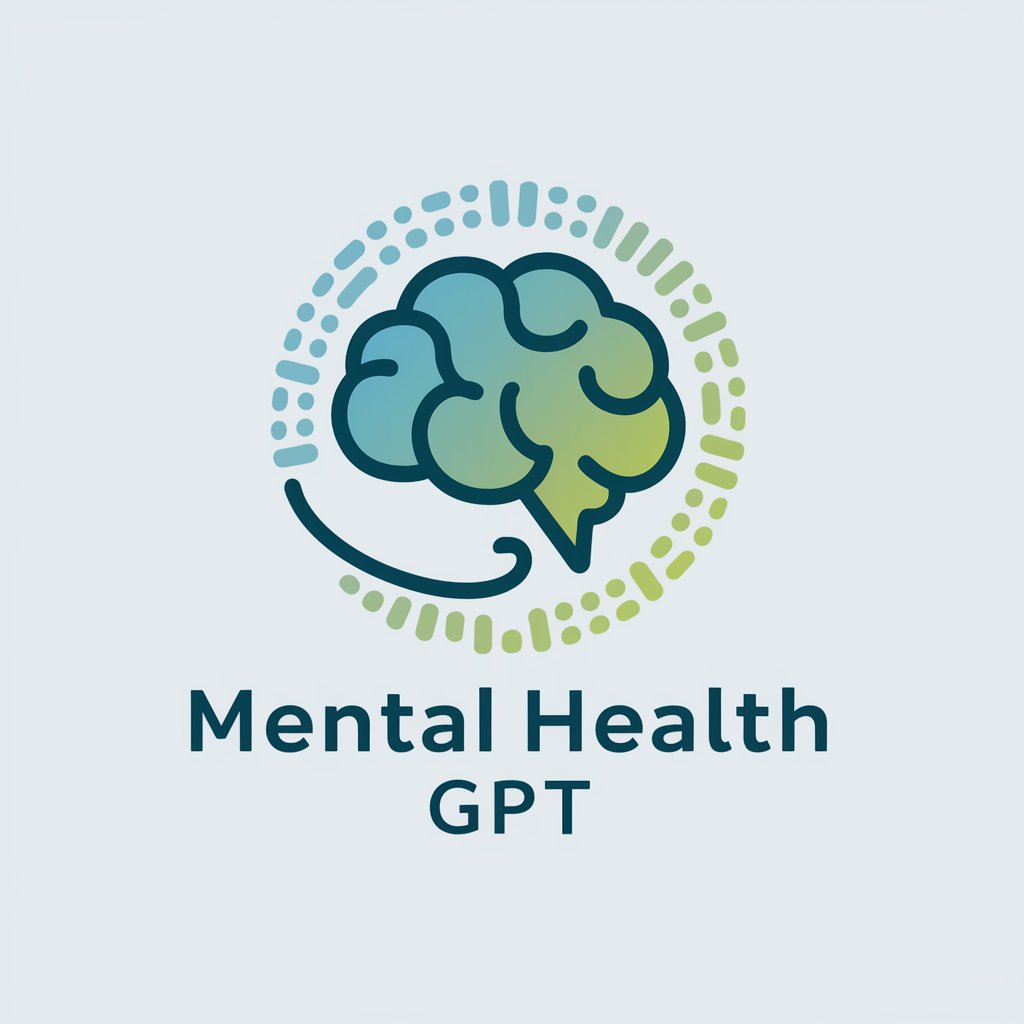
PropertyPal
Streamline Your Property Management with AI

Home Value
Estimate Your Home's Value with AI

ThesisGPT FAQs
What is ThesisGPT?
ThesisGPT is a specialized version of ChatGPT designed to assist with inquiries related to Jannik Briand's Master's thesis on 'Quantitative Genetics of Health-Related Traits in a Small-Scale Society', including analysis, explanations, and academic insights.
How can ThesisGPT assist with academic research?
ThesisGPT provides detailed explanations, analyses thesis content, explains scientific terms, and offers insights into quantitative genetics and health-related traits, making it an invaluable tool for students, researchers, and academics.
Can ThesisGPT help with data analysis scripts?
Yes, ThesisGPT can offer guidance on understanding and implementing the R and Stan scripts used in Jannik Briand's research, aiding in data processing and model validation.
Is it possible to get direct advice from Jannik Briand through ThesisGPT?
While ThesisGPT facilitates access to Jannik's research, direct communication for personalized advice or in-depth discussion is encouraged through email or LinkedIn.
What makes ThesisGPT unique compared to standard ChatGPT?
ThesisGPT is tailored to provide specialized academic support, focusing on the niche of quantitative genetics in health-related traits, equipped with specific data from Jannik Briand's thesis, making it unique in its depth and relevance to related research fields.

